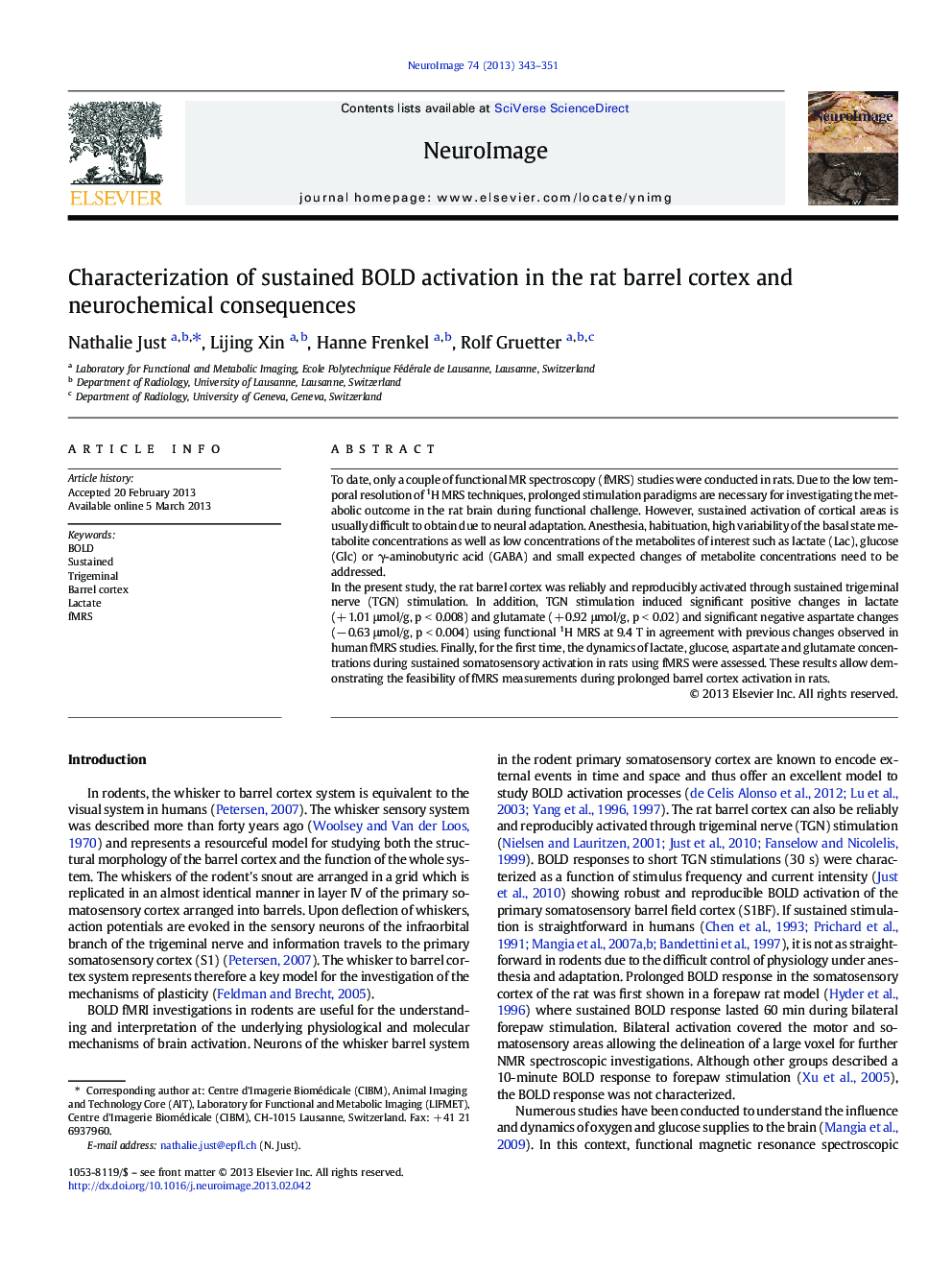| Article ID | Journal | Published Year | Pages | File Type |
|---|---|---|---|---|
| 6029839 | NeuroImage | 2013 | 9 Pages |
â¢Sustained Electrical Trigeminal nerve stimulation was used.â¢Strong and reproducible BOLD responses were obtained in the rat barrel cortex.â¢The spatiotemporal characteristics of the prolonged BOLD response were examined.â¢Functional MR spectroscopy of the rat barrel cortex was feasible.â¢Measurements of the dynamics of Lac, Glc, Asp and Glu were performed.
To date, only a couple of functional MR spectroscopy (fMRS) studies were conducted in rats. Due to the low temporal resolution of 1H MRS techniques, prolonged stimulation paradigms are necessary for investigating the metabolic outcome in the rat brain during functional challenge. However, sustained activation of cortical areas is usually difficult to obtain due to neural adaptation. Anesthesia, habituation, high variability of the basal state metabolite concentrations as well as low concentrations of the metabolites of interest such as lactate (Lac), glucose (Glc) or γ-aminobutyric acid (GABA) and small expected changes of metabolite concentrations need to be addressed.In the present study, the rat barrel cortex was reliably and reproducibly activated through sustained trigeminal nerve (TGN) stimulation. In addition, TGN stimulation induced significant positive changes in lactate (+ 1.01 μmol/g, p < 0.008) and glutamate (+ 0.92 μmol/g, p < 0.02) and significant negative aspartate changes (â 0.63 μmol/g, p < 0.004) using functional 1H MRS at 9.4 T in agreement with previous changes observed in human fMRS studies. Finally, for the first time, the dynamics of lactate, glucose, aspartate and glutamate concentrations during sustained somatosensory activation in rats using fMRS were assessed. These results allow demonstrating the feasibility of fMRS measurements during prolonged barrel cortex activation in rats.
